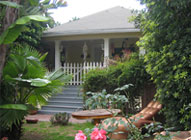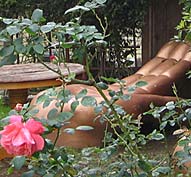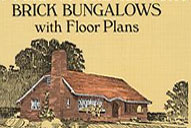




954 Fifth St.


Turn of the 20th Century Cottage
954 5th St

Garden view
 100 Turn-of-the-Century
Brick Bungalows with Floor Plans
100 Turn-of-the-Century
Brick Bungalows with Floor PlansNina Fresco, member of the Santa Monica Conservancy states that 954 is "a particularly fine example of turn-of-the-century housing." Of those still standing, she said, only four retain their architectural integrity.
On behalf of the owner, however, attorney Ken Kutcher asserted that the owner had spent "tens of thousands of dollars" getting the project approved. "It is very, very difficult for them to consider a change in plans at this juncture," he said.
Those members present voted unanimously to seize the opportunity and apply for landmark status for the house. Chair Pro Tempore Roger Genser offered consolation, saying that application is only the first step in a long process towards official designation.
Owners of Landmark homes can take advantage of their historic status to seek tax advantages. The Mills Act is a state law that enables local governments to enter into contracts with owners of qualified historic properties to authorize a property tax reduction. Under the Mills Act, property taxes can be reduced by as much as 30% in exchange for a 10-year contract promising to restore and maintain designated and structures of merit.
The Mills Act was adopted in Santa Monica in 1991, as part of a comprehensive
revision to the City's Landmarks Ordinance. The City Council authorized
designated structures of merit, landmarks, and contributing structures
located in designated historic districts to be considered "qualified
historical properties" eligible for historical property contracts
submitted pursuant to the provisions of
California Government Code Sections 50280-50290.
As a result, property owners of such designated historic properties may
file a Mills Act Contract Application. Once approved, a Mills Act contract
requires the County Tax Assessor's office to determine the value of the
historic property based upon its current net operating income, rather
than upon the traditional assessed valuation method, resulting in a property
tax reduction. For
structures that are owner occupied, the net operating income is determined
by the income the property would produce if rented. In exchange for the
property tax reduction, the owner agrees to protect, maintain and, if
necessary, restore the historic property.
The initial Mills Act contract term is ten years. However, each year
on the anniversary of the contract's effective date, an additional year
is added to the contract term unless the property owner or the City submits
a notice of non-renewal to the other party in a timely manner. Effectively,
the actual term of the
contract is at least ten years, but may be indefinite, as it is automatically
annually renewed.